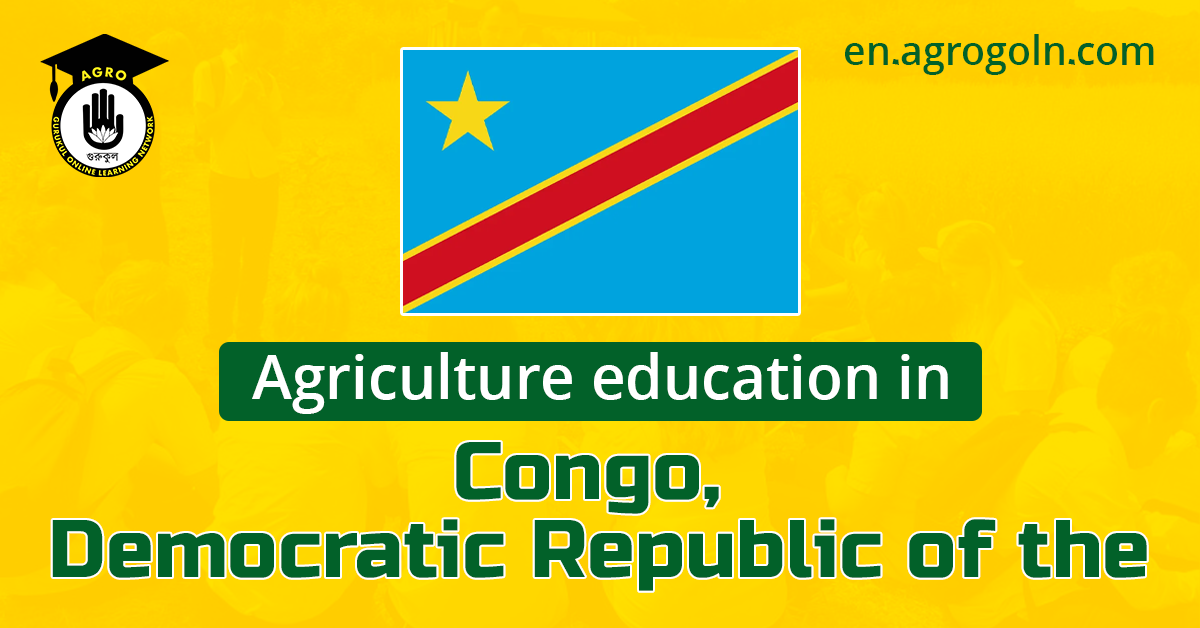The Democratic Republic of the Congo (DRC), often simply referred to as Congo, has vast agricultural potential. It is estimated that the country possesses 80 million hectares of arable land, but less than 10% of this is currently under cultivation. Despite the presence of numerous rivers and a favorable climate, agriculture in Congo remains underdeveloped. However, there’s a growing consensus about the role of agriculture education as a catalyst for change. This article delves into the state, importance, challenges, and prospects of agriculture education in Congo.
1. The Current State of Agriculture in Congo
The DRC’s economy is heavily dependent on its mining sector, which is a source of major export revenue. Yet, agriculture continues to be the mainstay for a majority of the population, employing more than 70% of the workforce. Staple foods include cassava, maize, and rice. There is also a significant production of cash crops such as coffee, palm oil, and rubber.
Despite the vast arable land and water resources, agricultural productivity remains low. This is primarily due to outdated farming methods, lack of access to modern inputs, limited infrastructure, and lack of formal education in agriculture.
2. The Importance of Agriculture Education
Economic Growth: Investing in agriculture education can significantly enhance productivity, leading to increased incomes for farmers and overall economic growth. By learning modern farming techniques, farmers can increase yield and profitability.
Food Security: Enhancing agricultural education can lead to better food security by increasing food production. With improved techniques, Congo can not only meet its domestic food needs but also tap into regional markets.
Sustainability: Proper agricultural education emphasizes sustainable practices that can preserve the environment, ensuring long-term productivity.
Reduction in Rural-Urban Migration: By making agriculture profitable and appealing, educated young people might be more likely to stay in rural areas rather than migrating to cities in search of better opportunities.
3. Current State of Agriculture Education in Congo
Agriculture education in the DRC is offered at several levels: primary, secondary, and tertiary. However, the quality and reach of such education are inconsistent.
Primary and Secondary Education: Agriculture is often taught as a component of general studies. However, these lessons are largely theoretical and lack practical applications.
Tertiary Education: There are institutions, such as the University of Kinshasa, that offer degrees in agriculture and related fields. However, these programs often lack the resources and infrastructure needed for effective hands-on training.
Informal Education: Farmer training programs, often initiated by NGOs and international organizations, aim to bridge the gap by providing practical knowledge to farmers. But these are often short-term and can’t replace a structured education system.
4. Challenges Facing Agriculture Education
Resource Constraints: Many educational institutions lack the necessary resources – both in terms of trained personnel and infrastructure.
Outdated Curriculum: The curriculum in many schools and colleges doesn’t reflect modern agricultural practices, relying more on outdated techniques.
Cultural Barriers: In some communities, there’s a preference for traditional farming methods over modern techniques, which can be a hurdle for agricultural educators.
Lack of Coordination: There’s often a lack of coordination between different educational initiatives, leading to inefficiencies and duplication of efforts.
5. Opportunities and Prospects
Strengthening Partnerships: Collaboration between the government, NGOs, and international organizations can lead to a unified approach towards agriculture education. For instance, initiatives such as the Comprehensive Africa Agriculture Development Programme (CAADP) can play a pivotal role in shaping the future of agriculture education in Congo.
Integrating Technology: E-learning platforms can be used to overcome the limitations of traditional classroom-based learning. Mobile applications and online courses can bring world-class education to remote parts of Congo.
On-Farm Training: Emphasizing practical training on farms can provide hands-on experience, bridging the gap between theory and practice.
Attracting Investments: International organizations and private entities can be encouraged to invest in agriculture education in the DRC, seeing its potential for economic growth and stability.
6. Conclusion
Agriculture education holds the key to unlocking the vast potential of Congo’s agriculture sector. While there are significant challenges, there’s also immense opportunity. By investing in education, Congo can pave the way for increased agricultural productivity, economic growth, and food security. The ripple effect of a well-educated agricultural community can be the foundation for a prosperous and stable Congo.
